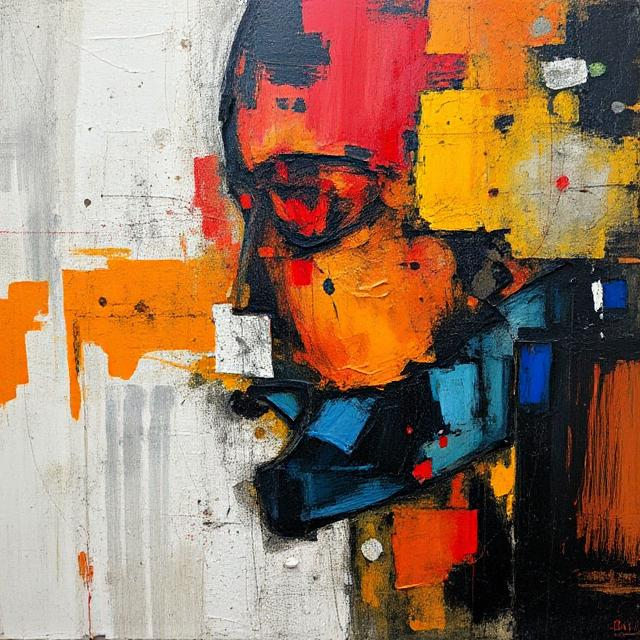If it is possible to identify and manipulate mental content, then we should be able to identify some practical applications. Here is what I mean by S.Y.S. (seeing your soul), Little Things, and Nostradamus.
See your Soul

This project, which I call “Little Things,” represents a small-scale artistic endeavor, not in the traditional sense. It’s a form of art that doesn’t necessarily fit the conventional definition. You might question the use of the term “art” while simultaneously acknowledging its limitations. I leave it to you to determine its value.
“Little Things” aims to address the mind and explore a method for improving internal mental imbalances. This process is limited in scope. Initially, the computer gathers certain intimate but sensitive user data, ensuring no personal identification or misuse. This data is then used by the software to generate an image presented to the user. This AI-generated image is intended to have a beneficial effect on the user’s mental state. At this stage, the service will be provided free of charge.
The mind, as I define it, encompasses the complex of faculties involved in perceiving, remembering, considering, evaluating, and deciding. Jean Piaget, the Swiss psychologist, recognized cognitive adaptation as consisting of two fundamental processes: assimilation and accommodation. Assimilation involves interpreting reality through the lens of one’s existing internal model of the world, while accommodation involves adjusting this model to accommodate new experiences. Faulty assimilation, influenced by past experiences, can lead to subsequent faulty accommodation. In essence, we perceive the world through the filter of our established perceptions.
If this erroneous “habituation” arises from assimilation, contact with the external world should ideally introduce novelty. “Little Things” aims to facilitate this by presenting users with AI-generated images. Data collection is voluntary, and the program utilizes specific methods to identify cognitive dissonances within the user’s existing mental framework. The generated image is then tailored to address these dissonances, based on a pre-existing model. The process primarily employs language-based techniques and, of course, some basic coding.
Little Things

The project that i called “Little Things,” represents a small-scale artistic endeavor, not in the traditional sense. It’s a form of art that doesn’t necessarily fit the conventional definition. You might question the use of the term “art” while simultaneously acknowledging its limitations. I leave it to you to determine its value.
“Little Things” aims to address the mind and explore a method for improving internal mental imbalances. This process is limited in scope. Initially, the computer gathers certain intimate but sensitive user data, ensuring no personal identification or misuse. This data is then used by the software to generate an image presented to the user. This AI-generated image is intended to have a beneficial effect on the user’s mental state. At this stage, the service will be provided free of charge.
The mind, as I define it, encompasses the complex of faculties involved in perceiving, remembering, considering, evaluating, and deciding. Jean Piaget, the Swiss psychologist, recognized cognitive adaptation as consisting of two fundamental processes: assimilation and accommodation. Assimilation involves interpreting reality through the lens of one’s existing internal model of the world, while accommodation involves adjusting this model to accommodate new experiences. Faulty assimilation, influenced by past experiences, can lead to subsequent faulty accommodation. In essence, we perceive the world through the filter of our established perceptions.
If this erroneous “habituation” arises from assimilation, contact with the external world should ideally introduce novelty. “Little Things” aims to facilitate this by presenting users with AI-generated images. Data collection is voluntary, and the program utilizes specific methods to identify cognitive dissonances within the user’s existing mental framework. The generated image is then tailored to address these dissonances, based on a pre-existing model. The process primarily employs language-based techniques and, of course, some basic coding.
Nostradamus

Here I am trying to complete a javascript in the test version which can make a premonition, strictly related to the user. However even any reality is strictly linked to the one who interprets it. You are what you think and probably will be from now on. The software asks the user to talk for 5 minutes (a short speech) about a topic that is most important to him. The software automatically process the text, identify the communication keys and give to the user a piece of advice that if he follows he has a better chance to succeed. The program is not a simple wizard, but makes a technical prognosis for the user’s future. To do this I automatically assess the language-behaviour link and assume the mind to be a predictable cultural construct. Oh and one more thing, it’s not a mambo jambo. The tools used, in addition to javascript code, are language related.
